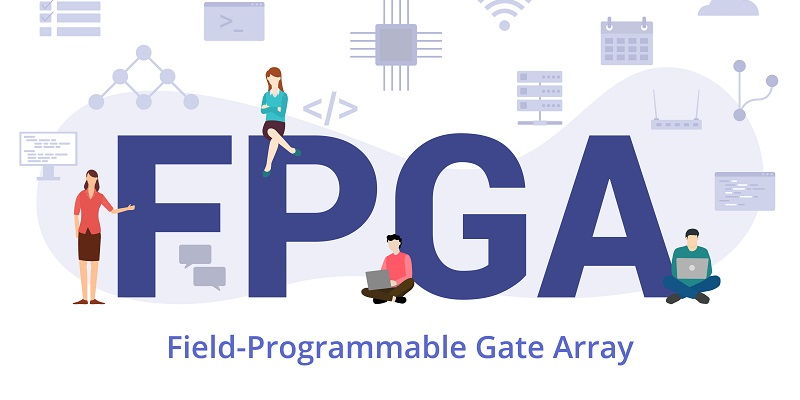FPGAs, which are a type of programmable logic device, have gained significant popularity in recent years due to their versatility and customizable nature. These integrated circuits, or chips, consist of configurable logic blocks (CLBs) that can be reconfigured after manufacturing, enabling a wide range of applications.
Understanding FPGAs
Field-programmable gate arrays (FPGAs) are semiconductor devices that offer an array of CLBs that can be programmed to perform complex logic functions. Unlike application-specific integrated circuits (ASICs), which are designed for specific tasks, FPGAs can be programmed and reprogrammed to adapt to changing requirements or specifications. This flexibility makes FPGAs highly adaptable and suitable for various applications.
Benefits of FPGAs
FPGAs offer several advantages that contribute to their increasing popularity in the tech industry.
1. Versatility and Flexibility: FPGAs provide the ability to create custom hardware configurations, allowing for the implementation of specialized algorithms or functionalities in a single device. This versatility makes FPGAs suitable for a wide range of applications, from telecommunications to automotive systems.
2. Speed and Efficiency: FPGAs can execute operations in parallel, resulting in faster processing speeds and improved performance compared to traditional processors. By offloading specific tasks to the FPGA, overall system efficiency can be significantly enhanced.
3. Cost-Effectiveness: FPGAs can serve as a cost-effective solution for certain applications. Instead of developing custom hardware for specific tasks, which can be expensive and time-consuming, FPGAs provide a reusable and programmable hardware platform that can be adapted to different project requirements.
4. Configurability and Integration: FPGAs enable seamless integration with other components, such as microcontrollers, reconfigurable processors, or memory interfaces. The ability to configure and integrate different functionalities in a single FPGA can streamline system architecture, reducing complexity and enhancing overall performance.
Challenges in using FPGAs
While FPGAs offer numerous benefits, there are several challenges that designers and engineers may encounter when working with these devices.
1. Cost Considerations: FPGAs can be relatively expensive compared to off-the-shelf microcontrollers or processors. This cost factor must be carefully considered, especially for projects with limited budgets or high-volume production requirements.
2. Power Consumption Issues: FPGAs typically consume more power compared to specialized ASICs or microcontrollers. Balancing functionality and power efficiency is critical, particularly in applications where power usage is a significant concern.
3. Complexity in Designing and Programming: Designing and programming FPGAs can be complex, requiring specialized skills and knowledge. The implementation of complex logic and algorithms may require a steep learning curve, making it important to have experienced FPGA designers or use appropriate development tools.
4. Time Constraints in Development: Developing FPGA-based solutions can be time-consuming, particularly when complex functionalities and design optimizations are required. Ensuring the timely completion of projects may necessitate efficient project management and optimization strategies.
Types of FPGAs
FPGAs come in different forms, each catering to specific application requirements.
1. SRAM-Based FPGAs: These FPGAs use static random-access memory (SRAM) cells to store configuration data. SRAM-based FPGAs are commonly used for prototyping, development, and applications where frequent design changes and tests are essential.
2. Flash-Based FPGAs: Flash-based FPGAs use non-volatile flash memory to store configuration data, eliminating the need for external configuration memory. These FPGAs are most suitable for applications that require instant-on functionality without reloading the configuration data at each power cycle.
3. Anti-Fuse FPGAs: Anti-fuse FPGAs feature tiny programmable elements called anti-fuses. Once programmed, these elements become permanent, providing high reliability and security. Anti-fuse FPGAs are ideal for applications that require security and do not require additional reprogramming.
FPGA Programming Languages
Verilog and VHDL are the most commonly used FPGA programming languages. These hardware description languages allow designers to describe the desired functionality of the FPGA in a logical and concise manner. They provide high-level abstractions and a robust design methodology, enabling efficient FPGA development.
Field-programmable gate arrays have revolutionized the design and implementation of digital systems. The versatility, speed, efficiency, cost-effectiveness, configurability, and integration capabilities of FPGAs make them invaluable tools in various industries. While challenges such as cost, power consumption, complexity, and time constraints exist, the benefits and potential of FPGAs continue to drive their widespread adoption. As FPGA programming languages like Verilog and VHDL continue to evolve, the possibilities for FPGA-based solutions become even more promising, paving the way for innovative and efficient digital systems.

